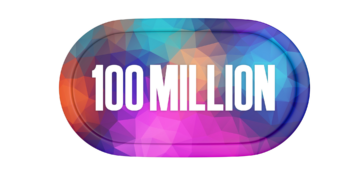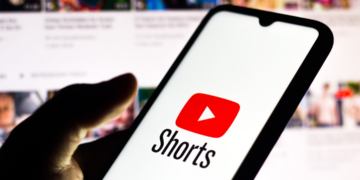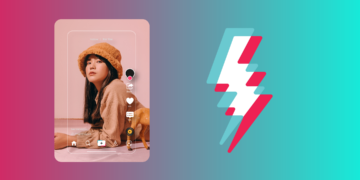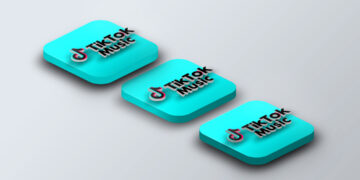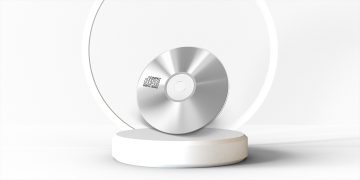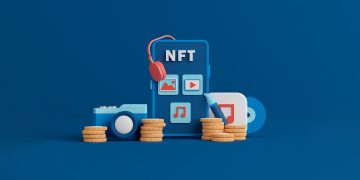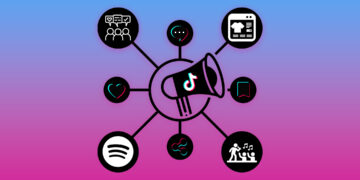Are NFTs changing the music industry?
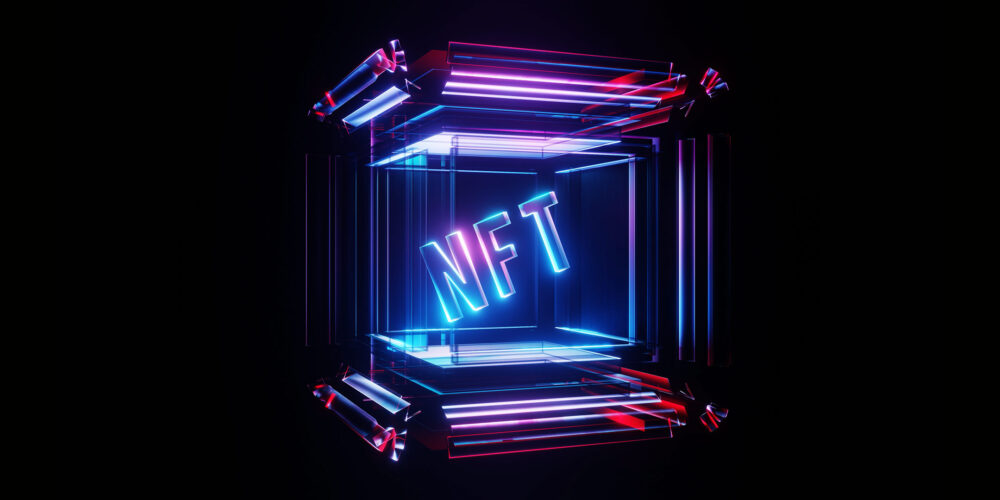
- An overview of how NFTs work, how to create them, and how to buy them
- The advantages of NFTs as a direct line between artist and fan
- What the barriers are for artists and buyers, and the other disadvantages that NFTs currently still have
Non-Fungible Tokens, short NFT, seem to be all anyone ever talks about at the moment – from the art scene to the music industry. iGroove Magazine has closely monitored this trend, but wanted to observe its development first instead of jumping on the bandwagon right away. Since the hype seems to persist, we show you in this posts what NFTs mean to musicians. We will start off by explaining the basics. But if you already have a good grasp on the subject, you can just skip the first part and continue reading below.
NFT: forgery-proof and unique
An NFT is essentially a unique, non-interchangeable key. So, in contrast to bitcoin or a bank bill, an NFT is one of a kind. If I gave you a 50 Dollar bill and you gave me one, we wouldn’t have the same bills anymore, but we would each still have 50 Dollars. This is not possible when you have an NFT, because it is unique.
NFTs make it possible for people to both collect and sell digital goods, which are stored on a forgery-proof (at least in most cases) blockchain.
We’re already familiar with this concept when it comes to physical creations: An artwork by Picasso could hang in a museum or in some rich collector’s home. At the same time anyone can buy a copy of a Picasso almost anywhere. But there is only one original and whoever owns it has a certificate of authenticity for it. Thanks to NFTs, this is now also possible for digital creations – no matter if it’s a JPG, GIF, MP3, meme, or anything else.
Digital files can be copied an infinite number of times, but thanks to an NFT, everyone now knows who owns the original. So, it’s not the digital work that is rare, but the token. Let’s assume someone bought a song as an NFT. That doesn’t mean that the buyer now owns the song. What they do own is the certificate, meaning the proof that they are in possession of the original. They can re-sell the NFT, but they don’t have the right to just do whatever they want with the song – unless this was specifically stated in the Smart Contract.
Earning money on resale
A Smart Contract sets all the details, e.g., who will get how much money from the sale of an NFT. For instance, it could say that 50% goes to the artist, 30% to the producer, and 20% to the graphic designer. Additionally, it sets how much money goes to the creator of the NFT in the case of a resale. For example: You’re selling an NFT for $ 10,000 and stipulate that you make 20% of any resale. The buyer then resells the NFT for $ 20,000, after which it changes hands for a whopping 100k. In total, you have now made 34k.
No NFTs without cryptocurrency
In order to set up or buy an NFT, you have to have a crypto wallet – meaning a place to save your cryptocurrency. After that you will need to buy some Ether (the second biggest cryptocurrency after Bitcoin) and put it in your wallet. A large number of NFTs are sold in Ethers and stored on the corresponding Ethereum blockchain. Finally, you will have to register at one of the market places for NFTs (Nifty Gateway, SuperRare, Opean Sea, Rarible etc.) and connect it with your wallet.
You need NFTs not only as a buyer but also as a seller, since you have to pay a so-called gas fee to mint an NFT.
NFTs: direct connection between artist and fan
When reading about NFTs, you will generally come across two different camps. One is euphoric and believes that NFTs are the future of the music industry and will replace labels and copyright collectives. The other thinks it’s not much more than a bubble in which crypto hipsters with too much money on their hands like to speculate. We want to present both viewpoints to you, as well as the current, and more importantly, future prospects, but also some of the stumbling blocks.
One of the biggest advantages of NFTs is the direct connection between artist and fan. The money flows from the fan straight to the artist, everything is stored transparently on the blockchain, and it can be reviewed by anyone. Other than the NFT platform, there are no more middlemen, and the artists get their revenues faster, as well. Additionally, as we have explained above, as an artist, you also earn money when the NFT is resold.
The fan has the option to support their favourite artist directly, and in return, they receive something that is one of a kind. Many hope that NFTs can bring back the value to music that it has lost through streaming. Nowadays, it’s not all that easy for someone to support their favourite artist financially. Out of their monthly streaming subscription only a small amount with lots of zeros behind the decimal point goes to the individual artist. And albums, merchandise, and concert tickets are not exactly things you buy every month either.
In addition to platforms like Patreon, NFTs thus provide a way to support an artist with a significantly higher figure.
At the same time, the artists have a way to offer their die-hard fans something truly special. Next to digital goods – from songs to videos to artworks – NFTs can also be offered for physical products like concert tickets, vinyl, or backstage passes. When it comes to NFts, we’re still very much at the beginning of the developments and are utilizing only a fraction of the opportunities available.
Share the success with the fans
Another area in which many see big potential is the sale of parts of the master and/or publishing rights. The musician here has the advantage of being able to receive a portion their future revenues at once. The fan can invest in the musician and even make some money off the success of their favourite artist, as well. NFTs could also become a type of fanclub, in which a fan could resell their membership and make money off it themselves.
But this is all still a long way off: the system is simply not ready for it yet. While the buyer does have the right to a portion of the royalties, they also have to know how to collect these. In most cases this is not possible to do over the blockchain, which is why copyright collectives, distributors, and labels still come into play.
The only time it’s possible is when the music is brand new and all the rights are owned by the artist themselves. Older releases usually have multiple parties involved, which makes things extremely complicated.
Thus, we’ve arrived at the stumbling blocks, because wherever new opportunities arise, there are always risks involved, as well.
High barriers for buyers and artists
Hardly a day goes by without news of million-dollar sales or superstars launching their own NFTs. But is art really what’s on the forefront here or is it all just about the collector’s value and thus also the speculation? Are NFTs truly valuable or does their value only come from people thinking they’re valuable, at least at the moment? What’s growing here – a bubble that will soon burst or a genuine, sustainable source of income for musicians?
Let’s first get to the main stumbling blocks: For anyone who hasn’t been dealing with cryptocurrencies for a long time, it’s not that easy to set up and sell NFTs. So, there’s a risk that artists are getting into some technology that they don’t completely understand. Even more problematic, however, are the challenges for the buyers. Few people have Ether in their crypto wallet and are hanging out in NFT marketplaces. Do you know someone who owns NFTs? Exactly. It will take years before they can truly establish themselves within the greater population.
Losses instead of high profits
Many also forget that it’s not exactly cheap to set up an NFT. As mentioned before, there is a so-called gas fee to pay, so you will quickly rack up a $200 bill before you even get started. If you then sell your NFT for a five- or six-figure price, then this is obviously not a problem. But with the media only reporting on all the successful, million-dollar sales, people often forget that many NFTs don’t find any buyers at all.
Chances are high that in the future, things will look similar to the pattern on Spotify and YouTube, where a very small number of people rake in millions of streams/views and the majority has less than 1,000. It’s very probable that only a small number of people will be able to make big bucks with NFTs, while the large majority will earn little to nothing.
Another risk that should not be underestimated are the marketplaces that the NFTs are tied to. If one of them goes bankrupt, the NFT that was bought will vanish into thin air, as well.
So far, only around 150 musicians have sold NFTs (although this number is obviously increasing rapidly). Most of them are extremely well-established and have a strong fanbase. Their NFTs are often sold for astronomical prices that a normal fan could never afford. At the moment, NFTs are therefore primarily a playground for superstars on the one side and crypto nerds and other people with a well-lined purse (or rather, a full crypto wallet) on the other.
NFTs are still a long way from entering the mainstream
While this hobby of the crypto and finance buffs is making its way into the mainstream, it hasn’t quite gotten there yet. It still remains to be seen whether NFTs are more than just an object of speculation. So far, instead of more democratization in the music industry, they have only given rise to a few winning parties. When Grimes sells NFTs for 6 million dollars, it benefits neither the starving artists nor the music industry as a whole. In order for independent artists to truly be able to make a profit, a mass market needs to emerge and prices need to settle at a reasonable level.
But in this whole discussion, we haven’t even mentioned the most significant drawback: Since NFTs are based on blockchain-technology, they are incredibly energy-intensive. So, anyone who cares even a little bit about climate change should keep their hands off them until the industry has found another way.
But in the other aspects, too, we’d say: without a huge and more importantly, well-heeled fanbase, you should focus more on other monetization options rather than NFTs. However, you should also still keep an eye on their development.

